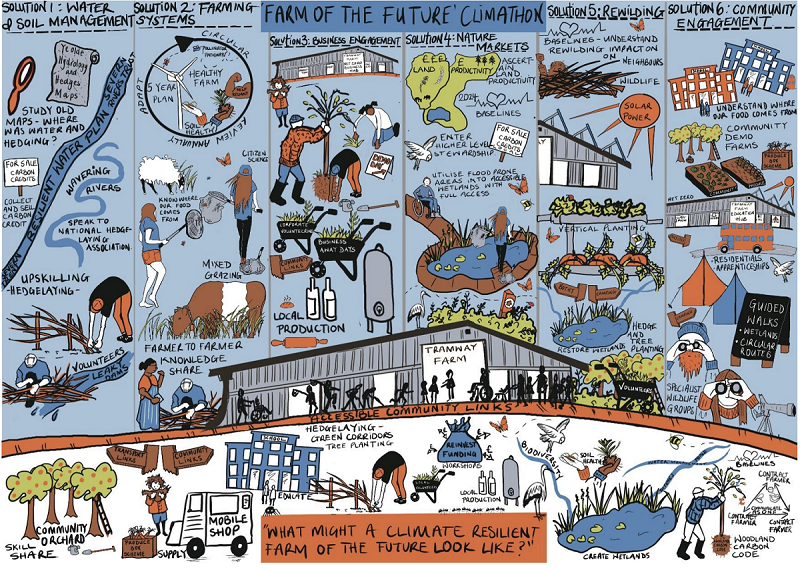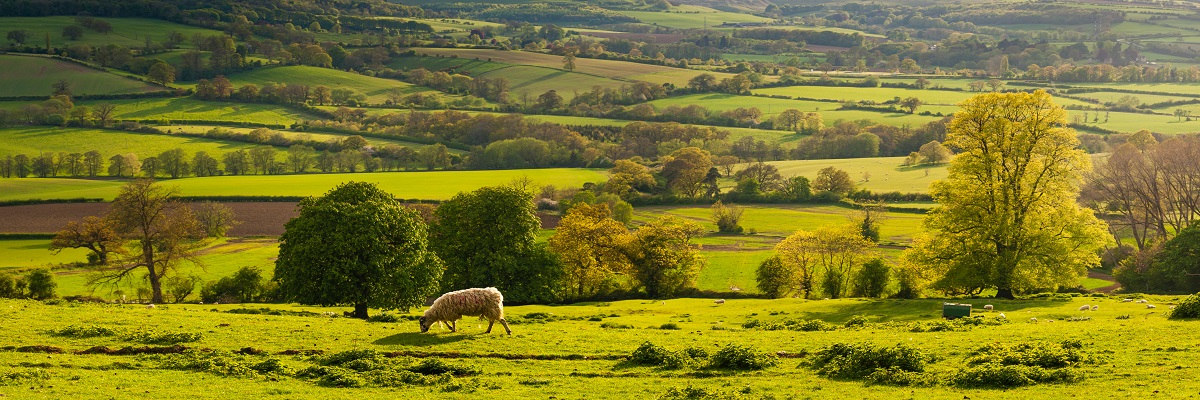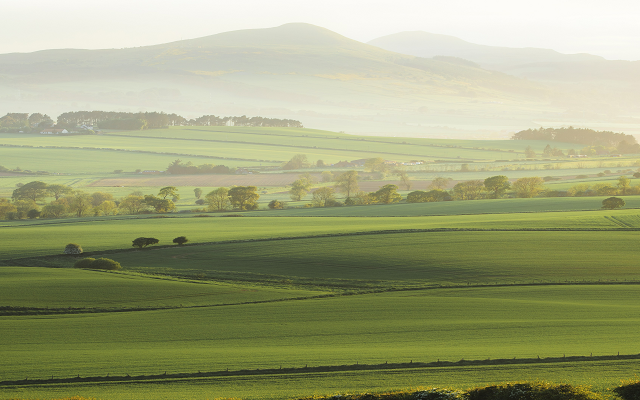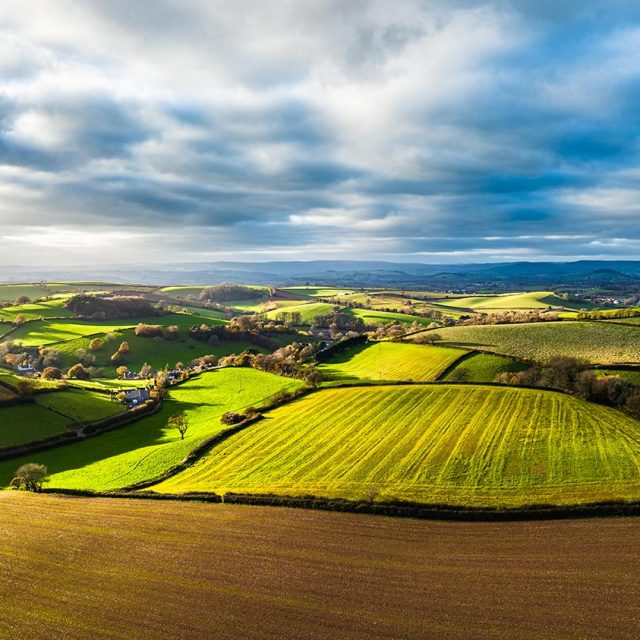Climathon event can unlock new ideas for farms and estates
Land managers are all too aware of the growing list of challenges they are facing as a result of climate change. Hotter, drier summers and warmer, wetter winters are already impacting on agricultural productivity, soil health and biodiversity. The UK Climate Projections (UKCP), produced by the Met Office, show that over the coming years the frequency and severity of extreme weather events such as heavy rainfall, periods of drought and heatwaves are only likely to get worse.
Yet working out creative solutions which can be implemented at a farm level to improve climate resilience, that also fit with wider business objectives and are locally appropriate can be a daunting exercise.
What is a Climathon and how can it help?
The Climathon concept was developed almost a decade ago by an international body called Climate KIC, which is a Knowledge and Innovation Community. The original idea was to draw a range of different city-based stakeholders together to come up with solutions which would help to tackle climate change.
More recently, the Climathon method has been adapted by the Countryside and Community Research Institute (CCRI) team at the University of Gloucestershire to better suit the needs of rural communities.
Strutt & Parker was recently involved in helping CCRI to design and run a Climathon event on a 480-acre, predominantly arable farm, near Shipston-on-Stour on the Gloucestershire-Warwickshire border. The event sought to answer the question of ‘what might a climate resilient farm of the future look like?’ seeking input from a wide range of interested parties. It was funded by the National Innovation Centre for Rural Enterprise (NICRE) programme. Strutt & Parker is a business partner of NICRE.
What was involved in the Climathon?
There were two parts to the event – a 90-minute webinar, which set the scene and allowed participants to begin identifying local priority actions, followed by an in-person event, where participants worked in teams to identify and design solutions for farms typical of the local area.
The in-person, one-day event started with a farm walk which was important for people to get an overview of the farm, see what steps have already been taken to address climate resilience and to start an exchange of ideas in an informal setting. Participants then reconvened in the local village hall where they were divided into groups to discuss and develop relevant solutions for the farm. A set of ground rules for the discussions were agreed first, which included the fact that all questions were valid and all contributions valuable.
In the afternoon, six teams put forward their solutions and received feedback from a panel which included a representative of the farming family, Strutt & Parker and the Royal Agricultural Society of England.
What sort of ideas did the event generate?
The solution development phase was positive and creative, with the final ideas put forward by the different groups reflecting the family’s strategic objective of balancing economic profitability with environmental sustainability, while maximising social value and accessibility.
The ideas included:
- Implementing a water management plan which focuses on managing water flow in existing rivers and streams to prevent flooding, developing water features to encourage biodiversity and improving soil organic matter to improve water retention.
- Creating a circular, self-reliant farming system which focuses on the benefits to the community, biodiversity and climate, through the implementation of new grazing and agroforestry systems.
- Developing new revenues from nature markets by entering into agri-environment schemes and through the sale of carbon credits.
- A programme of hedgerow restoration and a phase of natural regeneration to improve biodiversity using funding from the Countryside Stewardship Scheme and Woodland Creation Offer.
- Development of a carbon neutral community education hub in one of the farm buildings to reconnect people to nature and food production.
- Engaging with businesses by offering team building activities for away days, coupled with the development of a carbon neutral local food processing hub.
What happens next?
The ‘solutions’ generated during the day are now being considered by the family which owns the farm to see if there are any they want to take forward. Their initial feedback has been very positive as they felt it gave them new ideas and an insight into the interests and concerns of many local stakeholders.
| Benefits of Climathon | Challenges of Climathon |
| Ideas generated in short period of time (one day) | Process needs careful management to produce useful outcomes |
| Encourages fresh thinking by drawing in a wide range of interested parties | Requires farm managers to be open with participants as to their strategic objectives |
| Facilitates collaboration between parties with differing viewpoints | |
| Focuses on locally appropriate solutions |

Visual representation of the discussions and solutions generated during the Climathon.
Illustrated by Amanda Steer.






